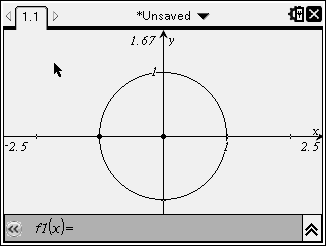There are many things that can complicate the process of integration. For instance, what makes the first of the following integrals more daunting than the second?
 Well, you wouldn't be wrong if you said the square root. However, when we deal with circular regions, we have no choice but the work with square roots. But what if we could make our lives simpler by moving to another coordinate system--namely, polar? As it turns out, polar makes integrating circular regions that seem overly complicated in rectangular coordinates seem trivial!
Well, you wouldn't be wrong if you said the square root. However, when we deal with circular regions, we have no choice but the work with square roots. But what if we could make our lives simpler by moving to another coordinate system--namely, polar? As it turns out, polar makes integrating circular regions that seem overly complicated in rectangular coordinates seem trivial!But first, it's essential to keep some basic rectangular to polar conversions in mind:
Now, remember our general formula for double integrals?
 The DA in polar becomes not dydx, like in rectangular coordinates, because the x and y axes only exist in rectangular. In polar, we describe curves by their angle and radius! That's why in polar...
The DA in polar becomes not dydx, like in rectangular coordinates, because the x and y axes only exist in rectangular. In polar, we describe curves by their angle and radius! That's why in polar...So as a quick example, lets say we're trying to find the volume of the paraboloid x^2+y^2 = z over this circle:
 Well, we can establish the limits of integration of our area by describing the angle and the radius. The circle runs all the way around, so it extends from 0 to 2pi. The radius is 1.
Well, we can establish the limits of integration of our area by describing the angle and the radius. The circle runs all the way around, so it extends from 0 to 2pi. The radius is 1.Note: Double integration for polar coordinates puts the angle first, then the radius.
So our integral would look like:

Remember that you also need to convert the equation of the paraboloid (x^2 + y^2) to polar as well, and then tack on the DA.
Happy polar integrating!


No comments:
Post a Comment